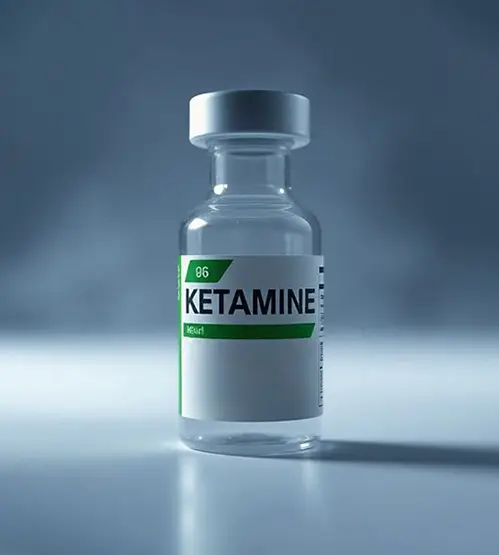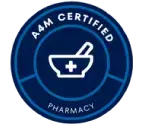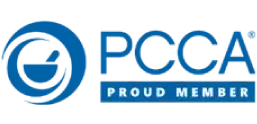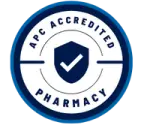Ketamine Compounding Services
Innovative Mental Health Solutions in DeBary, Florida
Breakthrough Treatment for Treatment-Resistant Depression and Chronic Pain
Ketamine Compounding Pharmacy services are at the heart of what we do at Advanced Scripts Pharmacy. We are proud to be a trusted provider of customized ketamine formulations that bring hope and healing to individuals suffering from treatment-resistant depression, anxiety disorders, and chronic pain. Our expert compounding team creates personalized ketamine therapies designed to deliver optimal results while maintaining the highest standards of safety, precision, and pharmaceutical quality.
Dr. Dina Ibrahim and our expert compounding team understand the unique challenges faced by patients who haven’t found relief with traditional treatments. Our custom ketamine solutions open new doors for mental health recovery and pain management—providing innovative options when conventional therapies fall short.
Understanding Ketamine Therapy
Ketamine represents a revolutionary breakthrough in mental health treatment, offering rapid relief for patients with treatment-resistant depression, severe anxiety, and certain chronic pain conditions. Unlike traditional antidepressants that can take weeks or months to show effects, ketamine often provides significant improvement within hours or days of treatment.
Originally developed as an anesthetic, ketamine's unique mechanism of action on the brain's NMDA receptors has opened new pathways for treating mental health conditions that don't respond to conventional medications. Our compounding capabilities allow us to create customized ketamine formulations tailored to your specific needs, dosing requirements, and treatment goals.
The compounding advantage means we can prepare ketamine in various forms including nasal sprays, sublingual tablets, topical creams, and other specialized delivery methods that may not be commercially available, providing more treatment options and improved patient outcomes.

Conditions Treated with Compounded Ketamine
- Treatment-Resistant Depression: For patients who haven’t responded to multiple antidepressant trials, compounded ketamine offers new hope. Studies show that up to 70% of patients with treatment-resistant depression experience significant improvement with ketamine therapy.
- Major Depressive Disorder: Even patients with severe depression who have had limited success with traditional treatments may benefit from ketamine’s rapid-acting antidepressant effects, often experiencing relief within hours rather than weeks.
- Anxiety Disorders: Severe anxiety conditions, including generalized anxiety disorder, social anxiety, and panic disorder, may respond to carefully compounded ketamine formulations when other treatments have been insufficient.
- Post-Traumatic Stress Disorder (PTSD): Ketamine’s unique action on brain receptors can help break the cycle of traumatic memories and emotional responses that characterize PTSD, offering relief for veterans and trauma survivors.
- Chronic Pain Syndromes: Conditions such as fibromyalgia, complex regional pain syndrome (CRPS), and neuropathic pain may benefit from ketamine’s pain-modulating effects, particularly when other pain management approaches have been inadequate.
- Bipolar Depression: The depressive episodes of bipolar disorder can be particularly challenging to treat, and ketamine may offer rapid relief during severe depressive phases when used as part of a comprehensive treatment plan.
Compounding Advantages and Customization Options
- Personalized Dosing: We can compound ketamine in exact strengths based on your response, tolerance, and treatment goals, allowing for precise dose optimization that maximizes benefits while minimizing side effects.
- Multiple Delivery Methods: Our compounding capabilities include nasal sprays, sublingual tablets, topical creams, oral solutions, and other specialized formulations that may provide better outcomes for your specific condition and preferences.
- Combination Formulations: When appropriate, we can combine ketamine with other medications or compounds to enhance therapeutic effects or address multiple symptoms simultaneously.
- Preservative-Free Options: For patients with sensitivities or allergies, we can prepare preservative-free formulations that eliminate potential irritants while maintaining medication stability and effectiveness.
- Flavoring and Palatability: Oral ketamine formulations can be flavored to improve taste and medication adherence, making treatment more comfortable and sustainable
Treatment Process and Administration
- Initial Evaluation: Your healthcare provider will conduct a comprehensive assessment including medical history, current medications, previous treatment attempts, and specific symptoms to determine if ketamine therapy is appropriate for your condition.
- Treatment Planning: Based on your evaluation, we’ll work with your provider to develop a personalized treatment plan including the optimal ketamine formulation, dosing schedule, and monitoring requirements.
- Compounding and Preparation: Our expert team prepares your custom ketamine formulation according to your prescription, ensuring precise dosing, optimal stability, and the highest quality standards.
- Administration and Monitoring: Depending on the formulation, ketamine may be administered in a clinical setting or at home under medical supervision. Regular monitoring ensures safety and allows for treatment adjustments as needed.
- Follow-up and Optimization: Ongoing communication with your healthcare provider allows for dose adjustments, formulation modifications, and treatment optimization based on your response and any side effects.
Safety and Monitoring
- Medical Supervision: All ketamine therapy must be prescribed and monitored by qualified healthcare providers experienced in ketamine treatment protocols and mental health management.
- Vital Sign Monitoring: During treatment, blood pressure, heart rate, and oxygen saturation are monitored to ensure patient safety, particularly during initial treatments or dose adjustments.
- Psychological Support: Ketamine can produce dissociative effects during treatment, requiring appropriate psychological support and a safe, comfortable environment during administration.
- Drug Interactions: Our team carefully reviews all medications and supplements to identify potential interactions and ensure safe combination with ketamine therapy.
- Contraindications: Certain medical conditions, including uncontrolled high blood pressure, active substance abuse, or certain psychiatric conditions, may preclude ketamine therapy.
Expected Outcomes and Timeline
- Rapid Onset: Many patients experience significant improvement within hours to days of their first ketamine treatment, much faster than traditional antidepressants which can take weeks or months to show effects.
- Treatment Course: Initial treatment typically involves a series of sessions over several weeks, followed by maintenance treatments as needed to sustain benefits.
- Sustained Benefits: While individual responses vary, many patients experience lasting improvements that continue between treatments, with some requiring only periodic maintenance sessions.
- Quality of Life: Beyond symptom improvement, patients often report enhanced overall quality of life, improved relationships, and renewed hope for the future.
Integration with Comprehensive Care
- Psychotherapy Integration: Ketamine’s neuroplasticity effects can enhance the benefits of psychotherapy, making patients more receptive to therapeutic interventions and behavioral changes.
- Medication Management: Our team coordinates with your healthcare providers to optimize all aspects of your treatment plan, including any other medications you may be taking.
- Lifestyle Support: We provide guidance on lifestyle factors that can enhance ketamine’s benefits, including sleep hygiene, nutrition, exercise, and stress management techniques.
- Long-term Planning: Treatment plans include strategies for maintaining benefits over time, including maintenance dosing schedules and ongoing monitoring protocols.
Who is a Good Candidate?
- Treatment-Resistant Patients: Individuals who have tried multiple antidepressants, mood stabilizers, or pain medications without adequate relief may be excellent candidates for ketamine therapy.
- Severe Symptoms: Patients with severe depression, suicidal ideation, or debilitating chronic pain who need rapid intervention may benefit from ketamine’s fast-acting effects.
- Motivated Patients: Individuals committed to comprehensive treatment including regular monitoring, follow-up appointments, and integration with other therapeutic interventions.
- Medical Stability: Patients with stable medical conditions who can safely tolerate ketamine’s effects under proper medical supervision.
Cost and Accessibility
- Competitive Pricing: Our compounded ketamine formulations often provide significant cost savings compared to commercial preparations or clinic-based treatments while maintaining the highest quality standards.
- Insurance Considerations: While insurance coverage for ketamine therapy varies, we provide documentation and support for insurance claims when possible, and our competitive pricing makes treatment accessible even for cash-pay patients.
- Payment Options: We offer flexible payment arrangements and accept various payment methods to make ketamine therapy as accessible as possible for qualifying patients.
- Value of Treatment: When considering the rapid relief, improved quality of life, and potential to reduce other healthcare costs, ketamine therapy represents exceptional value for appropriate candidates.
Getting Started with Ketamine Therapy
- Provider Consultation: The first step is consultation with a healthcare provider experienced in ketamine therapy who can evaluate your condition and determine if this treatment is appropriate for your specific needs.
- Comprehensive Evaluation: Your provider will review your medical history, current medications, previous treatments, and specific symptoms to develop a personalized treatment plan.
- Custom Compounding: Once prescribed, our expert team prepares your personalized ketamine formulation according to your specific requirements and treatment goals.
- Ongoing Support: We provide comprehensive support throughout your treatment journey, including coordination with your healthcare provider, monitoring for side effects, and treatment optimization.
Why Choose Advanced Scripts Pharmacy?
- Expertise and Experience: Dr. Ibrahim’s extensive clinical background and our team’s specialized compounding training ensure your ketamine formulation is prepared with the highest level of pharmaceutical expertise.
- Quality Assurance: Our state-of-the-art compounding facility and rigorous quality control procedures guarantee consistent potency, purity, and safety in every formulation.
- Personalized Care: We understand that mental health treatment requires compassionate, individualized care, and we’re committed to supporting your journey toward healing and recovery.
- Comprehensive Service: From initial consultation through ongoing treatment optimization, we provide complete support for your ketamine therapy needs.
Let's connect
Call or visit
Location
DeBary, FL 32713
Call us
Fax: 386-575-4194
Fast and Reliable Shipping
At Advanced Scripts Pharmacy, we understand the importance of timely access to your child's medications. That's why we offer fast, reliable shipping nationwide. No matter where you are in the United States, our customized compounded therapies can be delivered right to your doorstep with next-day shipping options available for most prescriptions. Your child's health shouldn't have to wait.




